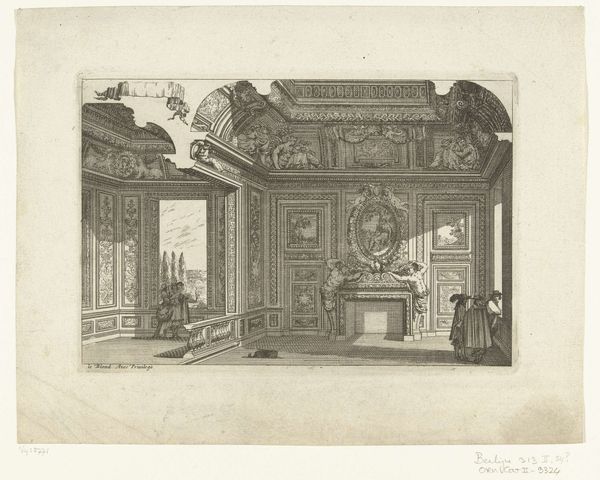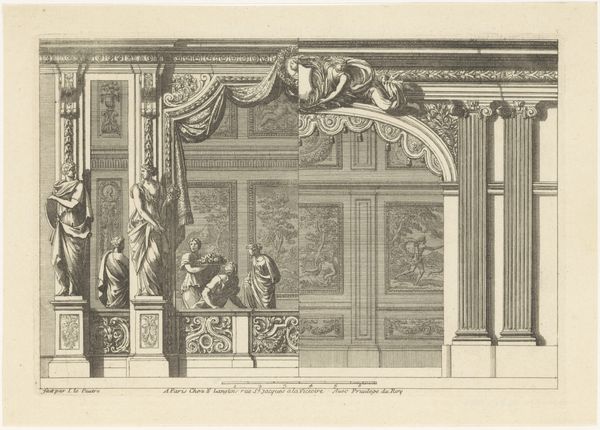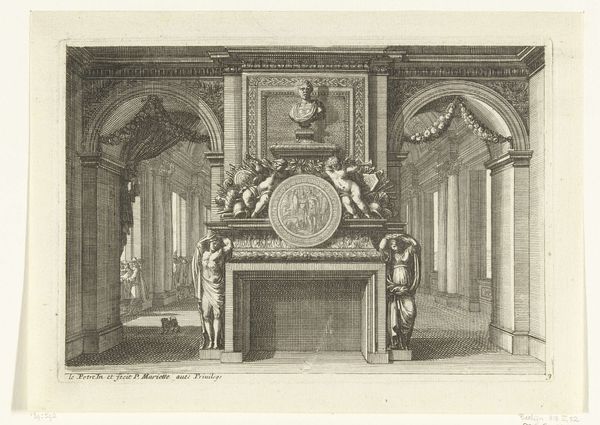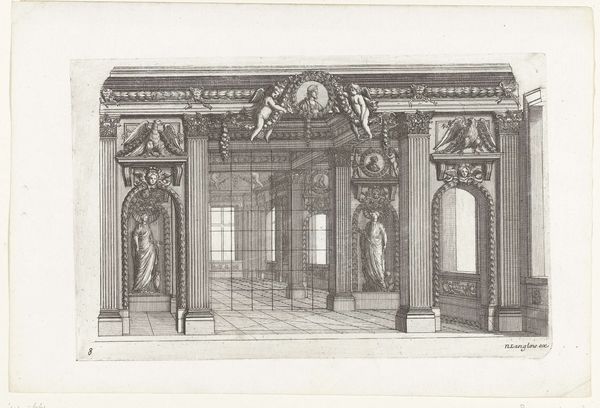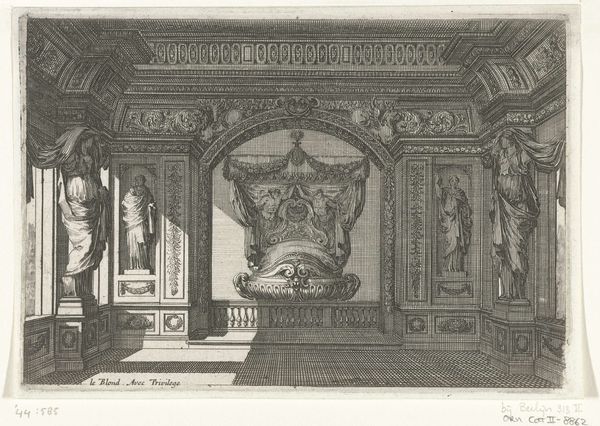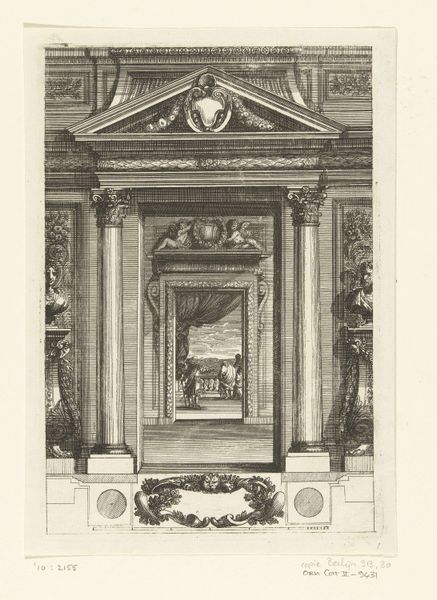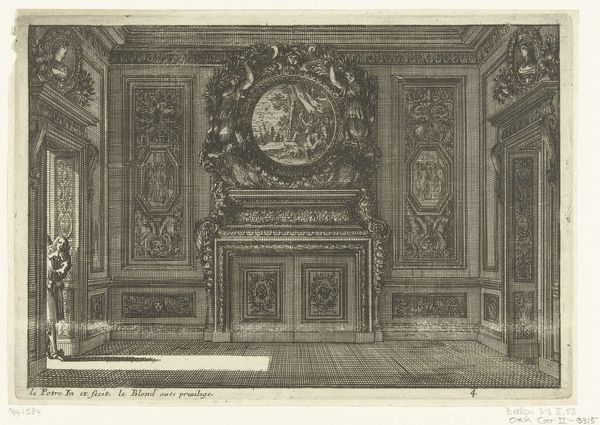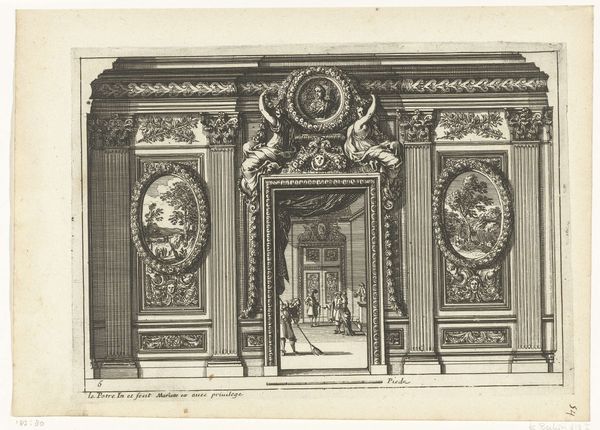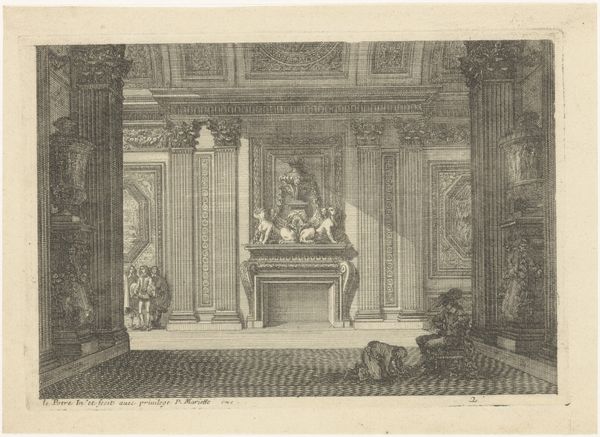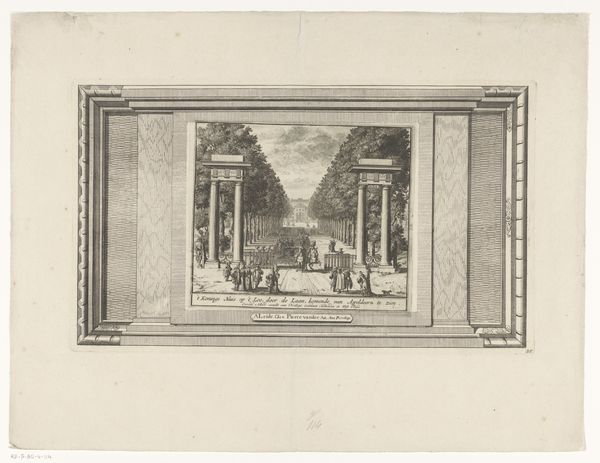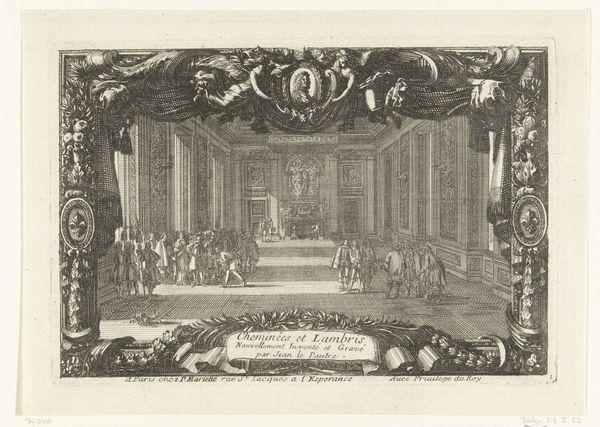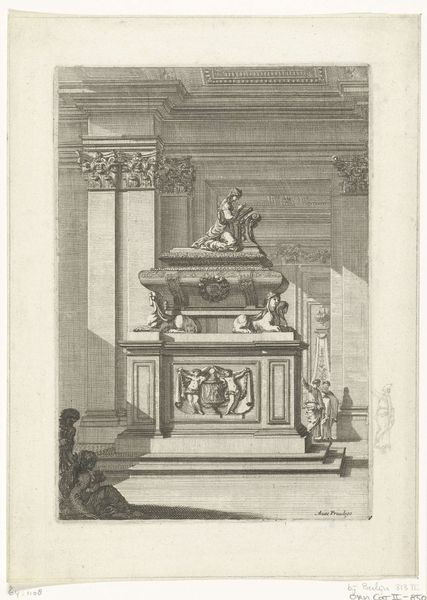
engraving, architecture
#
historical design
#
baroque
#
old engraving style
#
form
#
line
#
cityscape
#
history-painting
#
engraving
#
architecture
Dimensions: height 148 mm, width 210 mm
Copyright: Rijks Museum: Open Domain
Curator: I'm drawn to the theatrical quality of this engraving; it almost feels like stepping onto a stage set. Editor: Indeed. We’re looking at "Schouw in voorkamer", or "Hall with Fireplace", an engraving made before 1716 by Jean Lepautre, here at the Rijksmuseum. It really makes you think about interior design and how buildings showcased wealth. What are your thoughts on the architecture and those little figures dotted throughout? Curator: Well, I’m wondering about all the untold stories swirling within those elegant walls. All those people, layered into that space with what looks like chalk, waiting, listening. You know, the kind of hush just before the curtain rises… Editor: Lepautre, as a designer, was exceptionally influential, his detailed engravings circulating widely and informing architectural trends. I'm fascinated by how this seemingly straightforward depiction actually demonstrates a complex network of artisanal skill: from the drafting and engraving of the copperplate, to the quality of ink, to the paper production. Curator: And those endless rows of pillars, promising even grander rooms beyond… what do you see when you look at all those structural elements? Editor: I can almost feel the weight of expectation embedded in the architecture itself – all that stone and craftsmanship intended to demonstrate status and power. But it also poses questions about access. Who was *allowed* in this "voorkamer," this receiving hall? Who toiled to make it so impressive? The print itself would have likely been purchased by the wealthy as inspiration, of course. Curator: The shadows and light… it gives the room its breath and volume. I feel suspended between a sense of something just happened and anticipation of something to come… that doorway. Editor: A point of entry, or of escape. Jean Lepautre's work wasn't simply about aesthetics; it documents the material culture and social dynamics of the era, subtly capturing who benefits from beauty. Curator: That's beautifully put. It goes beyond just pretty lines – it gets to the very soul of what makes a space come alive and the many lives woven into it.
Comments
No comments
Be the first to comment and join the conversation on the ultimate creative platform.
